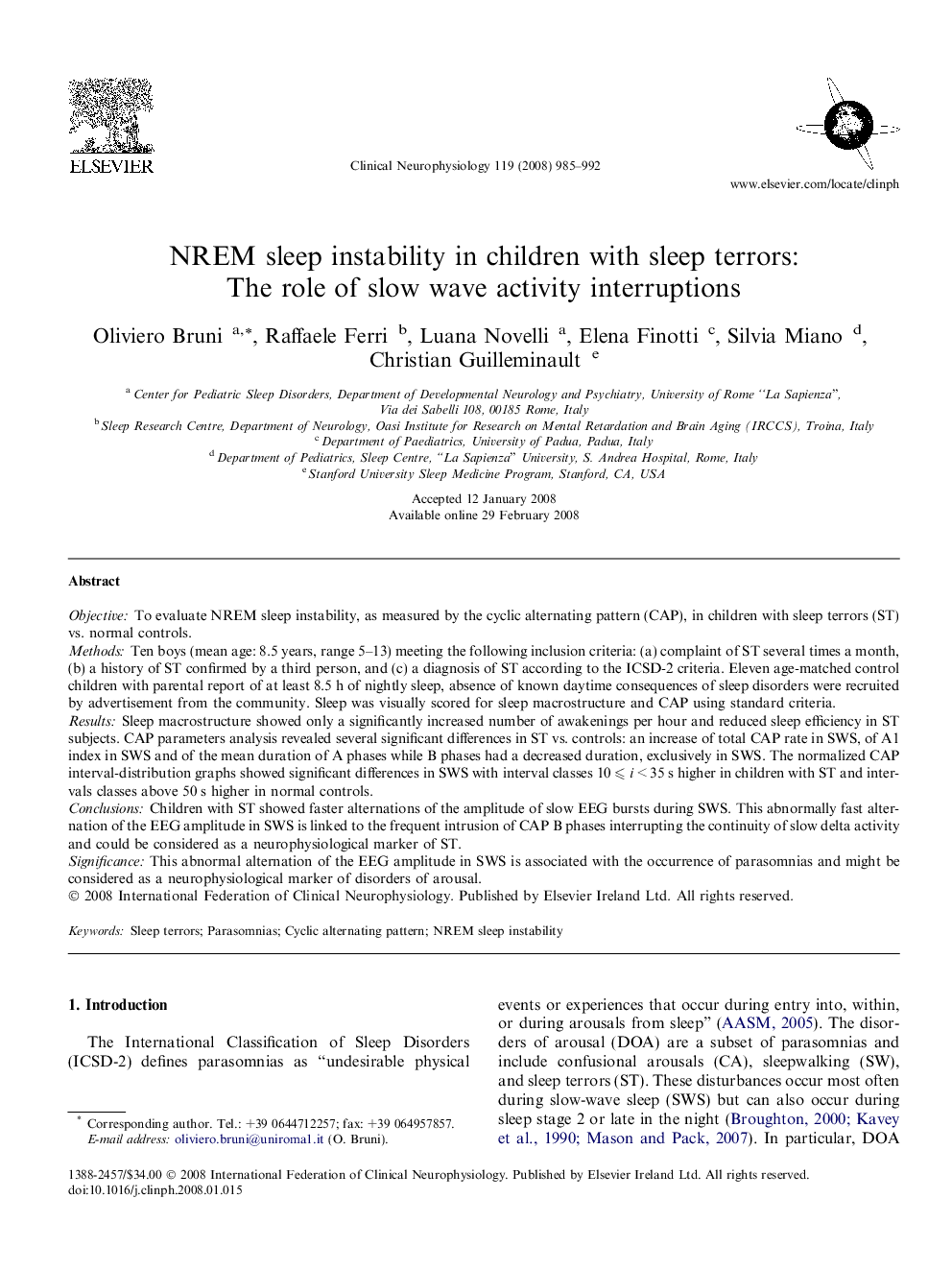| Article ID | Journal | Published Year | Pages | File Type |
|---|---|---|---|---|
| 3047585 | Clinical Neurophysiology | 2008 | 8 Pages |
ObjectiveTo evaluate NREM sleep instability, as measured by the cyclic alternating pattern (CAP), in children with sleep terrors (ST) vs. normal controls.MethodsTen boys (mean age: 8.5 years, range 5–13) meeting the following inclusion criteria: (a) complaint of ST several times a month, (b) a history of ST confirmed by a third person, and (c) a diagnosis of ST according to the ICSD-2 criteria. Eleven age-matched control children with parental report of at least 8.5 h of nightly sleep, absence of known daytime consequences of sleep disorders were recruited by advertisement from the community. Sleep was visually scored for sleep macrostructure and CAP using standard criteria.ResultsSleep macrostructure showed only a significantly increased number of awakenings per hour and reduced sleep efficiency in ST subjects. CAP parameters analysis revealed several significant differences in ST vs. controls: an increase of total CAP rate in SWS, of A1 index in SWS and of the mean duration of A phases while B phases had a decreased duration, exclusively in SWS. The normalized CAP interval-distribution graphs showed significant differences in SWS with interval classes 10 ⩽ i < 35 s higher in children with ST and intervals classes above 50 s higher in normal controls.ConclusionsChildren with ST showed faster alternations of the amplitude of slow EEG bursts during SWS. This abnormally fast alternation of the EEG amplitude in SWS is linked to the frequent intrusion of CAP B phases interrupting the continuity of slow delta activity and could be considered as a neurophysiological marker of ST.SignificanceThis abnormal alternation of the EEG amplitude in SWS is associated with the occurrence of parasomnias and might be considered as a neurophysiological marker of disorders of arousal.
